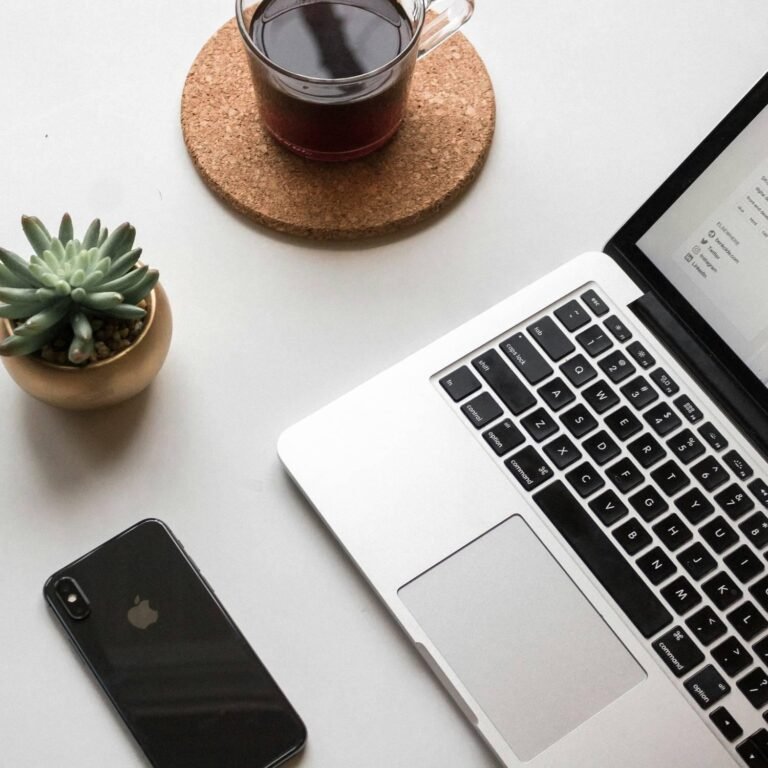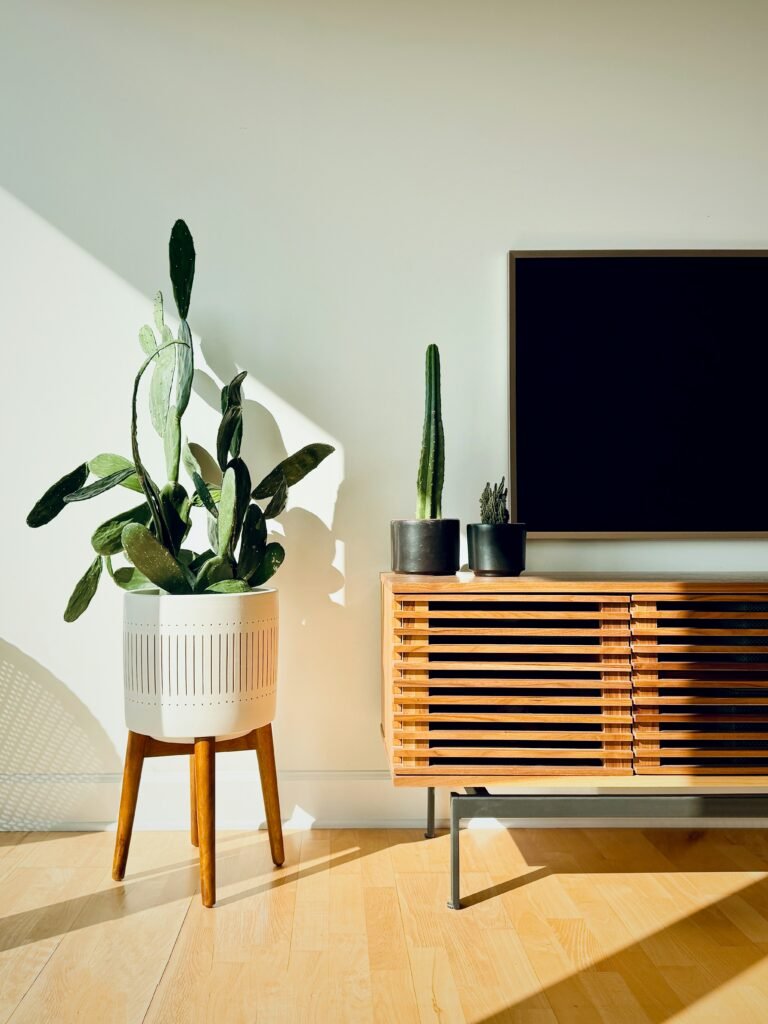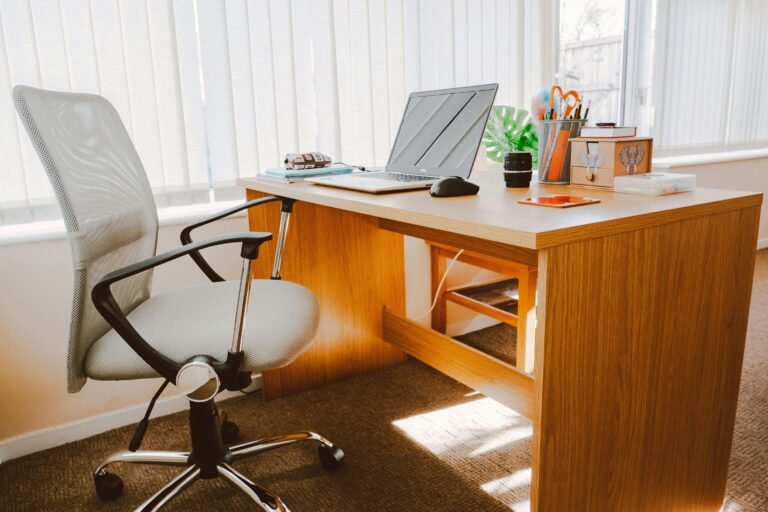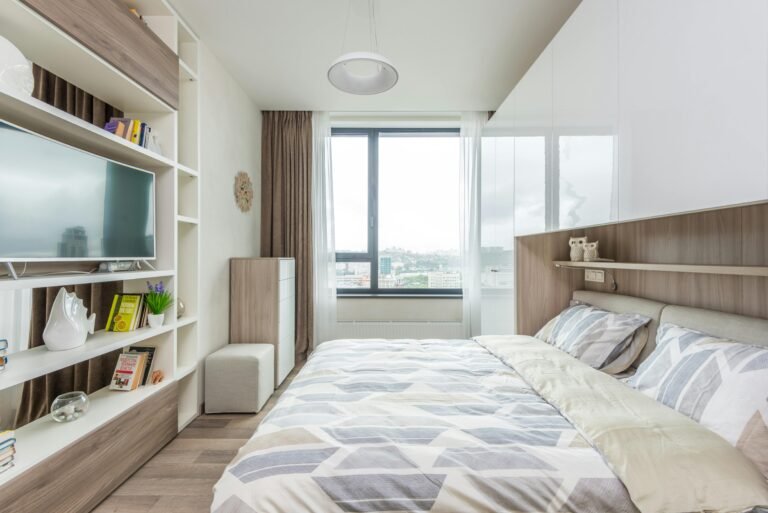Discover a desk that sparks creativity and boosts productivity. We know home offices matter, and experts say a good desk can improve your work (source: Journal of Ergonomics).
As work changes, the home office grows in importance. The desk is key. It must blend function and style well to boost daily productivity.
This guide shows many desk styles for every home office. Whether you work in a room, a small corner, or a multi-use space, we help you find the right desk. We cover ergonomic tips, style choices, and smart space solutions.
Get ready to explore where form meets function and where productivity fits with your style.
Understanding Your Home Office Needs
First, think about what your home office must do for you.
Evaluating Your Work Style
Consider these points:
- Nature of Work: Do you use a computer a lot, or do you need extra space for paper?
- Equipment Needs: Which devices and accessories do you use every day?
- Work Duration: Do you work long hours, making comfort key?
- Collaboration: Do you host meetings or need video calls?
Assessing Your Space
Think about:
- Available Area: Measure the space for your desk.
- Lighting: Note windows and where you need extra light.
- Power Outlets: Check that you can reach plugs easily.
- Traffic Flow: Ensure the desk does not block movement.
Considering Aesthetics
Reflect on these ideas:
- Home Decor: Will your desk match your room style?
- Personal Style: Do you like modern, traditional, or eclectic looks?
- Longevity: Pick a style you will enjoy for years.
Pro tip: Make a mood board that mixes your needs with your style. This tip comes from top interior designers.
Types of Desks for Home Offices
Now, let us look at different desk styles.
Traditional Writing Desks
These desks suit those who need a simple, classic work space.
- Characteristics:
- Flat, simple surface
- One or two drawers
- Often features fine woodwork
- Best for:
- Light computer work
- Writing and reading tasks
- Homes where looks matter
- Style variations:
- Mid-century modern for a retro touch
- Rustic farmhouse for a cozy feel
- Minimalist designs for modern spaces
L-Shaped Desks
These help you use corner space well and separate work zones.
- Characteristics:
- Two work surfaces at right angles
- Built-in storage is common
- Holds multiple monitors or tasks
- Best for:
- Large home offices
- People who need separate work areas
- Using unused corners
- Style variations:
- Executive designs for a professional look
- Industrial designs with metal parts
- Modular options to tailor your space
Standing Desks
Use these desks to stand or sit. This choice can boost your health.
- Characteristics:
- Height adjustable
- Use electric or manual settings
- Simple, modern look
- Benefits:
- Reduces too much sitting
- Eases back pain
- Boosts energy and focus
- Variations:
- Full standing desks that adjust fully
- Desktop converters for existing desks
- Treadmill desks for active work
Floating Desks
These are perfect for small spaces and a clean look.
- Characteristics:
- Mounted on the wall
- Often folds or drops down
- Takes up little space
- Best for:
- Tiny offices or bedrooms
- Multi-use rooms
- A clean, simple look
- Style options:
- Modern and sleek
- Rustic wood for warmth
- Built-in for a custom style
Executive Desks
These desks provide large surfaces and lots of storage. They make a strong statement.
- Characteristics:
- Generous work surface
- Many drawers and storage spots
- Made of high-quality materials
- Best for:
- Dedicated home office rooms
- Professionals who need a commanding space
- Those with heavy storage needs
- Style variations:
- Classic wood for a timeless look
- Modern glass and metal for a sleek feel
- Art Deco for vintage glamour
Ergonomic Considerations in Desk Design
Good posture keeps you healthy. Ergonomics should guide your desk choice.
Desk Height
- Standard Height: Usually 29-30 inches for a sitting desk.
- Adjustability: Choose desks with adjustable legs.
- Keyboard Tray: A pull-out tray sets your keyboard at the right height.
Work Surface Depth
- Minimum Depth: Use at least 24 inches for your monitor and keyboard.
- Ideal Depth: Most users need 30-36 inches.
- Monitor Distance: Keep monitors at an arm’s length.
Storage Ergonomics
- Frequently Used Items: Keep these within arm’s reach.
- File Drawers: Place them to the side of your work space.
- Cable Management: Look for desks that hide wires well.
Pro tip: Follow the 90-90-90 rule for your elbows, hips, and knees when sitting.
Desks for Different Home Spaces
Different rooms need different desk styles. Here are some ideas.
Dedicated Home Office Room
- Large Executive Desk: Use the space fully.
- L-Shaped Corner Desk: Make the best of your room corners.
- Standing Desk + Seating Area: Create work and meeting zones.
Living Room Office Nook
- Secretary Desk: Close it when you are not working.
- Ladder Desk: Mix work space with vertical storage.
- Console Table Desk: Use it as living room furniture too.
Bedroom Work Area
- Floating Desk: Save floor space.
- Desk + Dresser Combo: Get two uses in one piece.
- Compact Writing Desk: Keep a subtle office feel.
Kitchen or Dining Area Office
- Drop-Leaf Table: Expand it when needed.
- Built-in Desk Nook: Use a spare corner effectively.
- Rolling Desk: Move it when you need space.
Closet Office (“Cloffice”)
- Custom Built-in Desk: Use vertical space smartly.
- Fold-Down Desk: Tuck it away when not in use.
- Narrow Depth Desk: Fits standard closet sizes.
Style and Decor Integration
Your desk should work well and match your home decor. Look at these popular styles.
Modern Minimalist
- Characteristics: Clean lines and neutral tones.
- Materials: Glass, metal, and glossy finishes.
- Key Features: Hidden storage and wireless charging pads.
Rustic Farmhouse
- Characteristics: Warm and inviting with a distressed look.
- Materials: Reclaimed wood with iron accents.
- Key Features: Open shelves and barn-style cabinets.
Industrial Chic
- Characteristics: Raw and modern with a utilitarian feel.
- Materials: Metal and wood with exposed hardware.
- Key Features: Pipe legs and simple cable solutions.
Mid-Century Modern
- Characteristics: Retro style with organic shapes.
- Materials: Teak, walnut, and molded plastic.
- Key Features: Tapered legs and minimal drawers.
Transitional
- Characteristics: A mix of old and new design.
- Materials: Combines wood and painted surfaces.
- Key Features: Classic shapes with modern hardware.
Smart and Sustainable Desk Options
Technology and green choices matter. Choose desks that plan for the future.
Smart Desks
- Built-in Charging: Enjoy wireless pads and USB ports.
- Integrated Screens: Some desks feature monitor mounts.
- App Control: Adjust height and monitor use with apps.
Eco-Friendly Desks
- Sustainable Materials: Look for bamboo, recycled plastic, or reclaimed wood.
- Non-Toxic Finishes: Use low-VOC paints and stains.
- Energy Efficiency: Some desks use solar power or energy-saving lights.
Adaptable and Modular Desks
- Expandable Designs: Adjust your workspace as needed.
- Modular Components: Add or remove storage and shelves.
- Multi-Purpose Features: Some desks convert into dining tables or craft stations.
DIY and Custom Desk Solutions
You can build a desk that fits your style and budget. Try these ideas.
DIY Desk Projects
- Upcycled Door Desk: Turn an old door into a wide workspace.
- Pipe and Wood Desk: Combine pipes with wood planks for an industrial look.
- Floating Corner Desk: Use plywood and brackets to fit a corner perfectly.
Customizing Existing Furniture
- Dresser to Desk Conversion: Add a work top to your dresser.
- Bookshelf Desk Combo: Mix a desk with bookshelf storage.
- Console Table Upgrade: Add a pull-out keyboard tray to a console table.
Working with a Carpenter
- Built-in Office Nook: Use odd spaces with a custom solution.
- Personalized Storage: Design drawers and cabinets for your needs.
- Unique Materials: Work with special woods or vintage items for a custom look.
Accessories to Complement Your Desk
Add accessories to boost your desk’s function and style.
- Task Lighting: Use adjustable lamps or shelf lights.
- Monitor Arms: Free up space and improve posture.
- Cable Management Solutions: Try cable trays or magnetic ties.
- Desk Organizers: Use trays, pencil holders, and file sorters.
- Ergonomic Additions: Add keyboard trays, footrests, or balance boards.
Conclusion: Creating Your Ideal Home Office Desk Setup
Your desk choice is key to a happy workspace. Choose a desk that fits your work style and room.
Focus on good posture and a design that works for you. Your desk should boost both function and style.
Mix and match layouts and accessories until you are happy. Your space should grow as you change.
Your home office desk helps you work well and feel at ease. Choose a desk that brings joy every day.
Start exploring desks and accessories now. [Affiliate link placeholder]
As an Amazon Associate, I earn from qualifying purchases.
FAQ
- How do I choose the right desk for my home office?
- List what you need, measure your space, and consider ergonomics. Then, select a style that fits your decor.
- What materials should I look for in a desk?
- Seek desks made from durable wood, metal, or eco-friendly materials like bamboo.
- How can a desk improve my work posture?
- A well-designed desk has the right height, proper space, and cable management. This helps you maintain good posture.
- Are standing desks healthier than sitting desks?
- Yes, they allow you to switch between sitting and standing, which may reduce discomfort and boost energy.
Explore this topic: Office
Last updated on August 7, 2025








